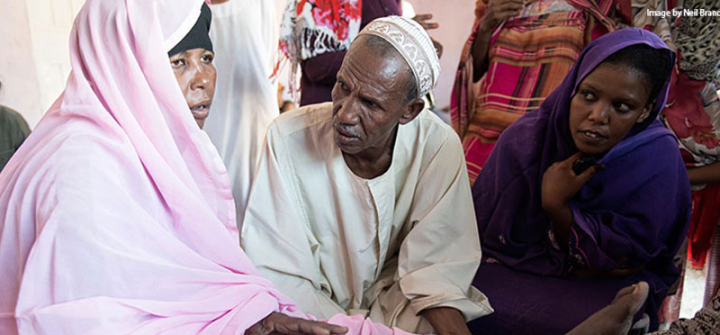Fighting off the Flesh Eater: Controlling Mycetoma in Sub-Saharan Africa
Farming is the major source of income for young adults residing in sub-Saharan Africa. But for those living in the mycetoma belt, it’s also a curse—one that will continue to destroy lives until affected countries step up and prioritize mycetoma surveillance, management and prevention.
Mycetoma, a flesh-eating, bone-destroying disease, disables thousands of young adults in affected areas. It predominantly afflicts lower-income farmers, typically breadwinners, who are easily exposed to the fungal or bacteria spores that cause the disease. Left untreated, affected limbs often must be amputated—with immense social and economic implications, including disability and financial burdens associated with the price of medication and loss of income. Yet far too little has been invested in education, surveillance, and measurement of the disease.
For Al Qaasim,* a young farmer from Geizira, Sudan, a simple thorny acacia tree wound ballooned into a destructive, debilitating, granulomatous swelling. After he was pricked during a harvest, he ignored the injury and painless swelling that developed and kept working. As the sole provider for his family, he had little choice. But within a few months, the cut became infected, forcing him to visit a hospital. It became so painful that he couldn’t walk. After several failed treatments, his foot had to be amputated to prevent the spread of the infection—ending his ability to farm, his only income source.
If he had known about the risk and received treatment right away, the outcome could have been very different. Early detection and management of mycetoma has been proven to have a tremendously positive impact on prognosis, markedly reducing morbidity and disability rates. Yet until it recently made the WHO list of Neglected Tropical Diseases, mycetoma was largely unknown in many parts of the world—prompting Global Health NOW to highlight the devastating disease in its first Untold Global Health Stories Contest in 2015.
Sudan, however, has been combating mycetoma for several decades. The development of a central coordinating body—the Mycetoma Research Centre at the University of Khartoum in 1991—unified efforts to treat, control and fight the disease. It played a significant role in advancing patient care, research and advocacy in the country.
Decentralized patient care within communities featuring free medical and surgical treatment, part of Sudan’s mycetoma control program, also improved awareness of the disease. The approach relied on local community engagement to promote health education and address related environmental and hygienic conditions. Though proper surveillance systems for mycetoma are still needed, this approach has proven tremendously effective in reducing inequalities in access to health care services and treatment in the endemic areas. In Sudan they resulted in a sizable drop in the number of patients with massive lesions requiring amputation, reflecting improved knowledge.
Nonetheless, without a global strategy execution is aimless. Interestingly, there are no global prevention or control programs for mycetoma. Considering that mycetoma is not a reportable disease, data on the global burden of the disease is exceedingly weak. The literature only documents 8,763 cases, whereas the burden is probably higher. Sudan has recently launched a national mycetoma control program. However, with few statistics on the prevalence and national disease burden, measuring progress is difficult. Moreover, investments in understanding the epidemiology, etiology and influence of environmental factors—including but not limited to climate change—on disease transmission and distribution remain meager.
The shortcomings reveal a dire need for a global survey to estimate the burden, as well as increased support for mycetoma belt countries trying to adopt national control programs. Resources and technical support are also needed urgently to study the environmental interplay with the etiological factors and the possibility of eradicating the disease.
Some countries within the mycetoma belt have seen the light, but how many more countries, how many more people are still in the shadows? Inspired by the simple but significant steps taken in countries like Sudan, we ought to wonder, can mycetoma be eradicated? We think the answer is yes.
Alaa Abusufian E. Dafallah is a final year medical student at the University of Khartoum and the Regional Assistant for Africa for the Standing Committee on Medical Education for IFMSA.
Parth K. Patel, MBBS, is an Intern Medical Doctor at the Queen Elizabeth Central Hospital, Blantyre, Malawi and the current Regional Director for Africa for the International Federation of Medical Students Association (IFMSA).
*Name of the subject in this commentary has been altered for privacy purposes.
Join the thousands of subscribers who rely on Global Health NOW summaries and exclusive articles for the latest public health news. Sign up for our free weekday enewsletter, and please share the link with friends and colleagues: http://www.globalhealthnow.org/subscribe.html




